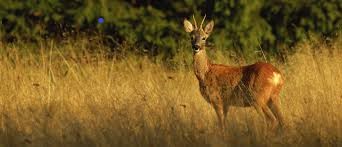IZS - Istituto Zooprofilattico Sperimentale Abruzzo e Molise
Tick encephalitis: first case diagnosed in a roe deer (Capreolus capreolus)

- Source: IZSVe
Researchers of the Istituto Zooprofilattico Sperimentale delle Venezie (IZSVe) diagnosed the first case of tick encephalitis (TBE, Tick Borne Encephalitis) in a roe deer (Capreolus capreolus), in the province of Belluno, Veneto Region, north-east of Italy, an area where the disease is endemic. Clinical cases of TBE in cervids have never been reported so far. This case, in addition to the interest in terms of differential diagnosis, draws attention to the importance of epidemiological surveillance of zoonoses in a constantly changing environment.
The study was published in the scientific journal Viruses .
TBE, or spring-summer meningoencephalitis, is an acute viral zoonosis of the central nervous system, transmitted mainly through bites of infected ticks to different mammals, including humans. The vectors of the disease in Europe are mainly the ticks Ixodes ricinus. To date, five viral subtypes are known, phylogenetically classified and characterised by different geographical distribution and the complexity of the disease induced in humans. In Western Europe, the European subtype is prevalent, with a mortality rate of less than 2%. The researchers, using a metagenomic approach , succeeded in sequencing the viral genome of the case in question, confirming a close correlation with this subtype.
In Italy, the presence of the virus is currently limited to the north-eastern part. In particular, in the province of Belluno, the area of origin of the young roe deer, there are about 40 % of all human cases of TBE in our country. The age of the animal is one-year-old and it has been identified thanks to the constant and careful monitoring in the area carried out by the Provincial Police, with which the IZSVe has been working closely for years.
The presence of severe neurological symptoms, in particular ataxia, staggering movements and precarious balance, muscle tremors, repetitive movements of the head, gnashing of teeth, hypersalivation and prolonged decubitus, has led agents in the field to consider promptly the subject for health checks.
The cycle of TBE depends on several interlinked factors such as the climate, the type of territory and the density of ticks and host animals in which they feed. Both animals competent in the transmission of the virus to ticks, such as small rodents, and other animals such as play a key role wild ungulates . The latter, although not competent in the transmission of the virus, play an important role in ensuring the survival and abundance of tick populations. For this reason, the outbreaks of TBE have an irregular distribution, ranging from a few square meters to several square kilometers.
The case described is of course not to be interpreted as an alert, as the area of origin was already known to be endemic to the disease, and even in the case of expansion into a new territory it would be much more likely to observe cases earlier in humans than in animals. and its classification in the ecological context, as it highlights for the first time the possibility of a clinical impact of infection in wild ruminants. Rather, this study, although limited to a single case, highlights the importance of animal health surveillance and its classification in the ecological context, as it shows for the first time the possibility of a clinical impact of infection in wild ruminants.
It is important to keep a high focus on unpredictable changes in the epidemiology of diseases that can increase the risk of infection for humans.
Read the scientific article on Viruses
Source: IZSVe